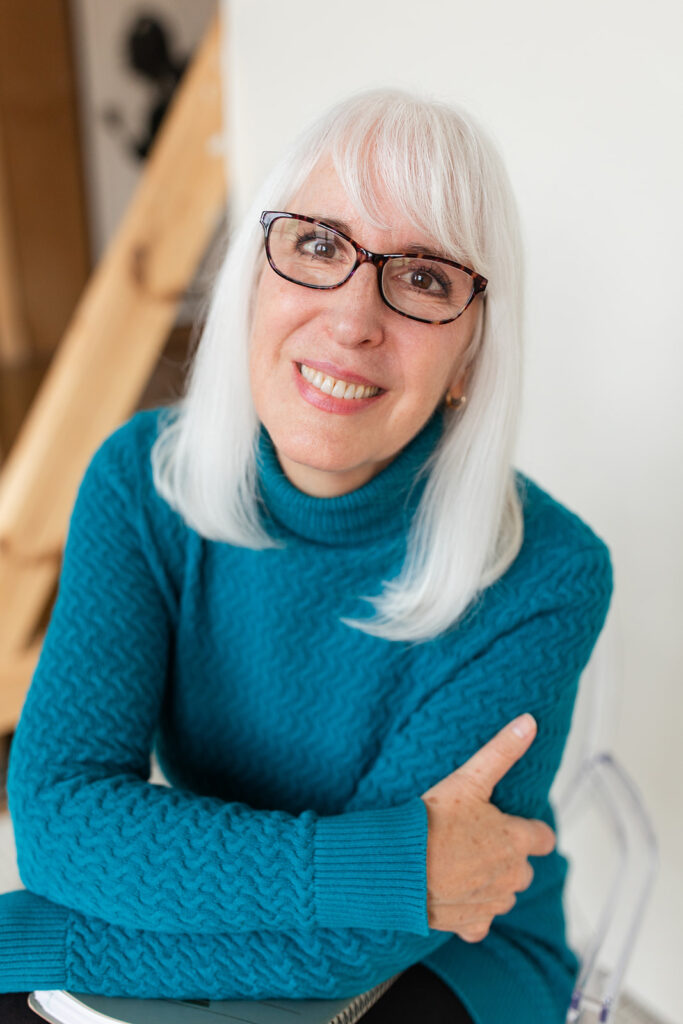
About Me
Before becoming a therapist, I worked as an information technology professional for several corporations. I held positions from programmer/analyst to product manager, business consultant, and trainer. This diverse background provides a unique vantage point for helping clients who experience workplace stress, work-life balance issues, life transitions, and employment/career concerns.
I have an MS in Mental Health Counseling, an MA in Organizational Management and BS in Business Administration.
I am a licensed mental health counselor in Iowa. I am trained in Eye Movement Desensitization Reprocessing (EMDR) and Accelerated Resolution Therapy. I am a Certified Grief Recovery Specialist. I provide a 7-week individual Grief Support program that addresses grief due to more than 40 different types of loss.
Why Linden Tree Center?

In My Office
In my office . . . is a very special blanket knitted by daughter, Morgan. This is her story about the blanket that is a good metaphor for life.
Get Your Knit Together

When I started knitting this blanket, I had a plan. I had less black yarn than the other colors, so that would be used to separate the colors. It started out great, the yarn had no strange knots. Eight, perfect rows of red yarn. By the time I got to the black, I remembered that I still hadn’t learned how to switch yarns. ‘No big deal,’ I thought. ‘I’ll just…tie it at the edges.’ It wasn’t perfect, but it held.
The thing about switching yarns is that it leaves a strange ridge of color, a break in an otherwise seamless experience. ‘No big deal, I’ll just make sure those ridges are only on one side of the blanket.’
I kept going, but by the time I got to the purple, I’d decided that the bulk of the blanket should have broader bands of color, separated still by that same eight rows of black, since I had so little of it to go around. It was gratifying when it worked out; I’d tried something different from the path I’d been on and made it work. By the time I got to the second band of white, I realized I wasn’t going to have enough to keep up with my vision. I only had enough for a final four rows.
I had three choices: start over with a different plan, give up, or just keep going and do what I’d originally set out to do: use up this old yarn that had been taking up space for years in my chest of supplies.
I decided to just keep going, it was still a perfectly usable blanket. So, it didn’t look like something anyone would buy, what did that matter? It was for me, nobody else. I was still doing something productive; it was just as good as any other.
Then I realized that I wouldn’t have enough black to make it through the next section if I did four rows. I had to find another way. ‘No problem, I’ll just do two rows.’ It wasn’t until I’d started in on the final purple panel that I realized I’d made a mistake with the switch between white and black. That glaring seam was on the front of my work. I’d been so concerned with how much I had left that I hadn’t stopped to be sure I was doing it correctly.
I could have let it go but I knew that, just because this wasn’t a conventional blanket, didn’t mean I wanted it to look shabby. I unraveled an hour’s worth of work, took a breath, and started again.
Looking back at it now, it really is an ugly blanket. An ugly, beautiful mess. By the time I ran out of my original red yarn, I had to just mesh it with another that was almost, but not quite, the same thing.
I don’t know you, or your story, but in your hands, on your lap, or around your shoulders, you have mine.
I started with the best of intentions, ran into crossroads where I had to make decisions that affected the outcome of the entire project but, in the end, nothing was ever so riddled with mistakes that, with time, they couldn’t be fixed, or moved on from. Knitting for me is a lot like my life. At some point it became a matter of what I could change, and what I had to accept as simply part of the finished product. It didn’t turn out the way I’d hoped and planned, but it’s useful. It will give someone warmth when they’re cold, or something real to hold onto. Life isn’t made up of one section of experiences and choices and, while whatever comes next may be completely different from what came before, it’s no less valid or worthy of being part of the finished product. I didn’t sit down and knit this thing with the intent of it mirroring my own life, my own struggles, but once I was done, I felt like I’d said something to myself that I needed to hear:
Just because it’s not what you wanted, doesn’t mean it isn’t exactly what you needed.